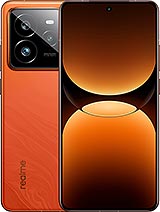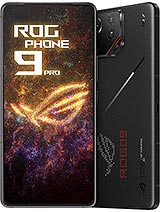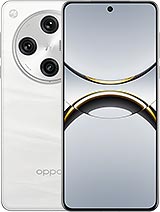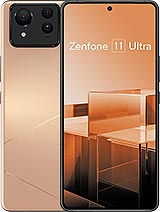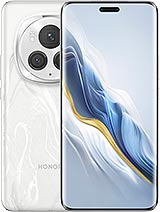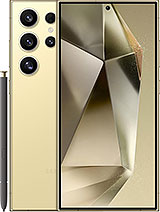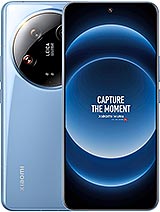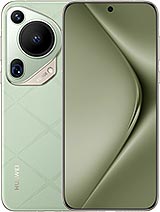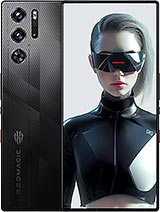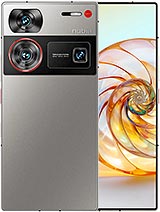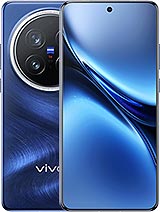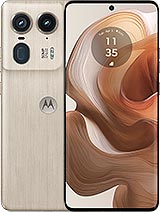nubia Z70 Ultra review

6.85-inch OLED display now reaches 144Hz
The nubia Z70 Ultra gets a new display with a minor increase in diagonal and a bump in maximum refresh rate. The company's ongoing under-display camera efforts mean that in most applications you won't see a punch hole, which isn't all too common of a feat and a pretty welcome sight indeed.

This model's screen has a 6.85-inch diagonal and a 2,688x1,216px resolution in a 19.9:9 aspect, with pixel density working out to 430ppi. The maximum refresh rate is 144Hz, up from the 120Hz of the predecessor. You'll probably note that the specs are the same as those on the recent Red Magic 10 Pro (also a ZTE brand), and we'd be pretty surprised if it's not the exact same panel.
Nubia quotes 2000nits of peak brightness, but as is normally the case, our measurements show a slightly different picture. In our testing, we got a little under 1,400nits in auto brightness mode - not something extraordinary, but a very good result nonetheless. The 618nits we measured in manual operation are alright too - 800-ish nits would have been better, but 600 isn't too bad.
Refresh rate
The Z70 Ultra may have upped the maximum refresh rate to 144Hz, but its adaptiveness hasn't increased all that much - it still switches between fixed steps (120/90/60Hz) and it doesn't go below 60Hz. Whichever mode you choose, the phone will dial down to 60Hz when idling. The 144Hz is only available in games, which seems fair.

Indeed, the Z70 Ultra appears to very gaming friendly, readily switching to 144Hz for the titles we usually test (both arcade and 3D), and its onscreen overlay reports frame rates above 60fps - we got 144fps in Dead Trigger 2, for example. The Game Space utility is packed with features, too, probably borrowing some features from the Red Magic lineup.
Streaming and HDR
The Z70 Ultra doesn't go wild with HDR support - it only has HDR10, but no HDR10+ or Dolby Vision. It reports Widevine L1 compliance, so you should be able to get FullHD streams of DRM protected content, but the Netlix app recognizes it as L3 and only allows SD streaming (no HDR either). We did get HDR in YouTube, so there's that.

The phone (kind of) supports the Android Ultra HDR standard for displaying HDR photos with enhanced tone mapping and a brightness boost for highlights, though it's a little buggy in its implementation. In our experience, it didn't work in the Google Photos app, which is the default (well, the only) gallery app. In the Google Chrome browser, you'd only get a momentary brightness boost and then the phone would dim down a little. There's some software fine tuning to be done, it seems.
nubia Z70 Ultra battery life
The Z70 Ultra brings a couple of battery changes, one being the switch to a silicon carbon anode cell, the other (possibly related) - a minor increase in capacity to 6,150mAh. We've been seeing batteries push beyond the 6,000mAh mark more and more often, and we have the iQOO 13 at the same capacity as the nubia and the Realme GT 7 Pro at 6,500mAh, while the OnePlus 13, for example, makes do with 6,000mAh.
Well, the Z70 Ultra's Active Use Score would best be described as 'very good'. We clocked a little over 11 hours on our web browsing script, a little over 16 hours of looping videos, and 9 hours flat in the gaming test - not record-breaking numbers, but pretty solid still. The voice call time was below average, driving the overall result down to around 13 hours.
Our new Active Use Score is an estimate of how long the battery will last if you use the device with a mix of all four test activities. You can adjust the calculation based on your usage pattern using the sliders below. You can read about our current battery life testing procedure here. For a comprehensive list of all tested devices so far, head this way.
Charging speed
The Z70 Ultra supports charging at up to 80W and that's also what it says on the adapter that ships with the phone. In our testing, we got as much as 62W on our power meter, which is a bit lower than expected, though the phone did maintain that level for more than just a fleeting moment.

We clocked an empty-to-full time of 42 minutes on the Z70 Ultra, a few minutes faster than the Z60 Ultra's result. The first 30 minutes got us to 84% - again, a little better than the old model. Compared to potential rivals, the Z70 Ultra is better than average.
That said, the Z60 Ultra did charge faster at the time of the initial review, only to drop its speed to the numbers shown in the chart a few months down the line. The point being that the Z70 Ultra might also get a different charging curve with a later update.
There's no wireless charging capability on the Z70 Ultra. It's not a given in its market segment, but more and more phones have it now and it would have been a welcome addition to the lineup - a missed opportunity.
The phone has a Charge separation feature - it can be set to only draw power directly from the adapter to meet its current needs, bypassing the battery. That way you can avoid unnecessary heat build-up when gaming, for example.
That same feature can be used to sort of ensure that the phone's battery doesn't charge beyond a certain percentage, potentially helping with the cell's long-term health. You can set the stepless slider to, say, 82%, and the phone will charge the battery to that level and then proceed to only draw as much power as it needs for its current activities. The range of that slider is plenty wide too - 20% to 90%.
Speaker test
The nubia's speaker system is a fairly classic hybrid arrangement with one bottom-firing unit and another one above the display that's also an earpiece. The phone maintains strict channel separation (unlike others that send the opposite channel's track to each speaker at a lower level) and will adjust the channels based on its orientation in space.


Bottom speaker • Top speaker/earpiece
In our testing, the Z70 Ultra earned a 'Very Good' rating for loudness - roughly on par with its competition. While the integrated loudness is higher on the old model, the new one shows significantly improved sound quality. Sound has more depth now, there's a decent amount of bass and the mids have been toned down so they don't dominate as much.
Use the Playback controls to listen to the phone sample recordings (best use headphones). We measure the average loudness of the speakers in LUFS. A lower absolute value means a louder sound. A look at the frequency response chart will tell you how far off the ideal "0db" flat line is the reproduction of the bass, treble, and mid frequencies. You can add more phones to compare how they differ. The scores and ratings are not comparable with our older loudspeaker test. Learn more about how we test here.
Reader comments
- Anonymous
- 16 Apr 2025
- bas
You clearly don't, if you're agreeing with the guy complaining his LG Wing, a phone using the default Android audio tech, sounds bad. Of course it sounds bad, he's listening to the default Android PCM setting(10/12-bit/48kHz). Prett...
- Anonymous
- 30 Mar 2025
- xHY
Thank you for still having real common sense, sir. Don't let people like him normalize the removal of both 3.5mm audio jack and microSD card slot. If anything, it only gives those capitalist corporations more chance to suck them into the inescap...
- Anonymous
- 30 Mar 2025
- xHY
How to tell people I know nothing about audio quality without telling people I know nothing about audio quality. 🙃🙃
